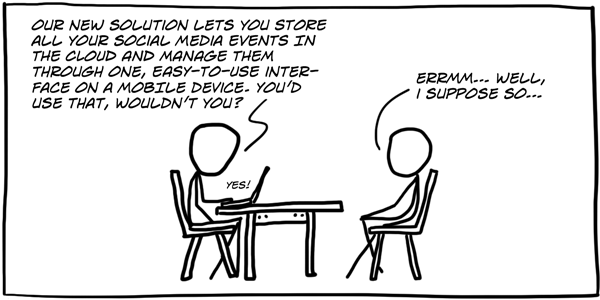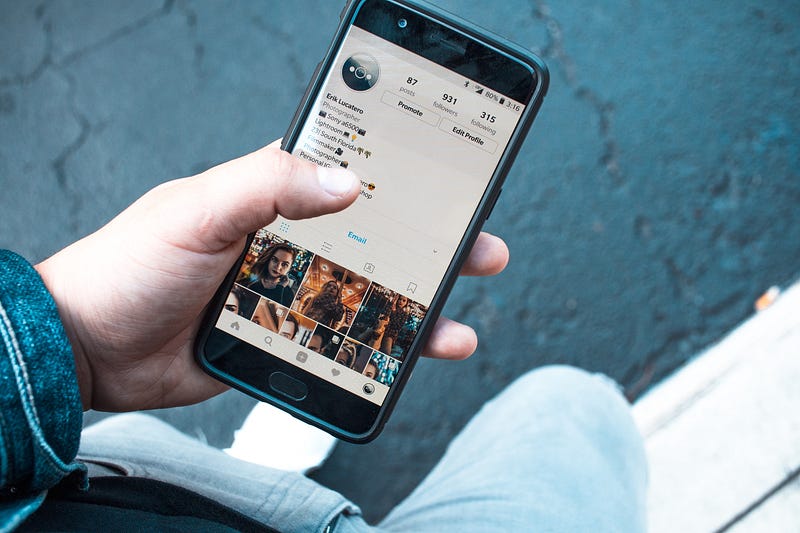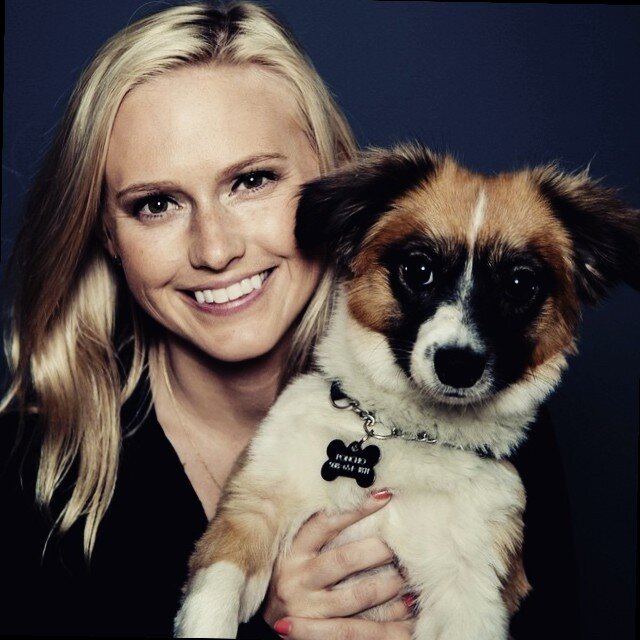A user research-focused course

***JANUARY 2021 UPDATE: Since posting this, I have heard from many of you about how you appreciate this idea. Because it is very difficult for me to support so many classes while working full time, I have created a website with updated course availability.***
The number one question I receive from people who are interested in getting into user research, or who are just beginning their career, is “what courses should I take? How do I learn more about user research?” I have yet to discover a good answer to this question. There are a few different options I bring up: taking a UX course (I taught part of one at Pratt), watching online tutorials or reading blogs/books.
I have a few qualms when recommending the above. Watching online tutorials and reading blogs/books, honestly, is great, but only gives you so much. It is very hard to learn a profession through just reading or watching. This is the reason I tend to recommend a UX course. Now, when I talk about UX courses, they are generally not focused on user research. Instead, they include the whole field of user experience, and highlight UX design, rather than research. Research tends to play a small part in the larger picture of the course.
There are very few courses out there that actually focus on cultivating a UX research career. Additionally, there are few university degrees relating to user research as its own career. Luckily, I majored in Psychology so I have a “research-background,” but Psychology research (and working in a mental hospital) is much different to UX research. However, it is difficult for people who are interested in become user researchers to take a course centering around starting a user research career.
I have learned so much from the research community, and have been so lucky to meet such compassionate and wonderful teachers — I only hope to pay it forward. This is why I am looking to put together a user research course to offer people who are interested. It is completely free. The only stipulation is, the first classes will be beta testers, and will have to give me feedback!
What will be covered?
In this 12–week live course, we will meet twice a week for three hours per class. In between, there will be homework (fun and inspiring, I promise). I will be breaking the class down into four core modules:
- What is user research and how does it fit into a company?
- How to conduct and share user research
- User research strategy
- Research portfolios and case studies
Each of these modules will cover the essentials of user research, such as methodologies, notetaking, stakeholder buy-in, timelines, recruitment, biggest challenges of a UX researcher and much more!
During the 12 weeks, there will be lecture, discussion and, most importantly, interaction/practice. We will be taking the lessons we learn in the class and actually practicing them. I will take the time to critique research plans, notes, interviews, etc. What I want more than anything from this course is to give people a space to practice and simulate what it means to be a user researcher. In addition, there will be a project each person works on throughout the course, so there will be a concrete portfolio piece at the end.
Why am I qualified to teach this course?
Well, I’m not particularly sure how qualified I am, but I’ve taught user research at Pratt University in New York, I’ve spoken at conferences/meetups, worked in a variety of companies/environments and I’ve done a lot of learning. I’m sure there are plenty of other people out there who are more qualified than I am, but I love teaching and empowering others and I would like to impart the knowledge I have gained so far. So, if you are willing to try this out with me, I would love that!
The classes will be open to four people. Again, completely free of charge, I just request (honest) feedback. The course will start in February of 2019.
If you are interested in this course, please fill out this Google Form (by January 3rd, 2019) to give me a better understanding of why you would like to take the course!
I would also like to run a user research portfolio workshop in January 2019, so please let me know if there is interest in that, as well. Feel free to reach out to me with any questions or comments: nikki@productherapy.com
I look forward to hearing from you!
Measuring the internal success of user research

I was recently asked, “how would you measure the success of user research?” I took a deep breath and started explaining our general UX metrics, such as task success, task completion, the SUS, and then dove, proudly, into how these metrics could also impact important business KPIs (I talk about both in this article). I described how you could benchmark all of these metrics, measure them over time, and have a good understanding if the success of your UX and research is improving. I looked back at the person in front of me, smiling. I had brought business into user research, something I had just recently learned how to do in the past year. The next question really threw me, “but how do you measure whether or not user research is successful, in practice?”
I racked my brain for an answer. Usually my UX metrics and business KPIs were enough, but this was going a step deeper. I laughed and used a response common to all researchers, “well, that is a really great question.” I have answers on how to prove the value of user research, or get stakeholder buy-in, but this was essentially benchmarking and measuring the concept and practice of user research in an organization.
What are the questions we could be asking:
The posed question threw me into a bit of a frenzy, researching what others may have done to measure the success of user research in an organization. I typed many search queries into Google and was met with similar responses: time on task, task success, revenue! Or the NPS. This led me to form several questions (of which I have not answered):
- What does it mean to have a “successful” user research practice in an organization?
- How do you measure whether or not user research is successful across an organization?
- Can you quantify impact of user research at an organization?
For those who have previously posed the question of quantifying a successful user research practice in an organization, there were a few thoughts:
- Presenting and showing how X research insight led to Y decision and Z design change, which positively impacted task success, SUS, time on task, etc.
- Asking internal stakeholders how impactful they believed a research initiative or outcome was (via a survey)
- Building visualizations based on research that stakeholders had asked for (personas, journey maps, etc.)
While these ideas make sense, I was looking for something more concrete. I brainstormed some of the following:
- Number of beta tests to try out new and innovative features, based off of research
- Number of usability tests run
- Number of research requests from internal stakeholders (product managers, designers, developers, customer experience, marketing, etc)
- Internal stakeholders using persona names in user stories or to communicate with each other
- “Important” features with low usage analytics improving (lower bounce rate, less time on page — if applicable)
- The killing of features not needed by users
- Decrease in customer support questions about functionality
These are all subjective to the company, specific goals a team may have, the product and the users. They are certainly not the answer to every problem, but they can, hopefully, open us up to more discussion on how user research impacts an organization. Ideally, we move towards a way to quantify our impact outside of revenue or time on task.
One final closing thought: it might not always be the impact of user research that needs to be measured, but how effectively team members are using the insights. For this, I am still brainstorming. I would love to hear more about how others have tackled, or are thinking about, this idea!
[embed]https://upscri.be/50d69a/[/embed]
Are we actually designing with humans in mind?
And the high you get from social media.

Social Media & Your Brain on Drugs
I speak for most of the population when I admit, there is a certain high you get from social media, whether it is a like, posting a particularly beautifully filtered photo, scrolling through Instagram to see frenemies “enjoying life” and chuckling to yourself, knowing they aren’t actually that happy. I know I’m not the only one who has done this. That rush and those feelings you experience is literally your brain on drugs.
The dopamine response
What does that mean? Obviously you haven’t taken any drugs, but, what I am trying to say is, the stimulus of what I mentioned above, of social media, induces a very similar reaction to that of drugs. Whenever you post or receive a like or comment, even when you are giving away likes or comments, you get a hit of dopamine.
What is dopamine exactly? It’s a neurochemical known as the “reward module” which is released after we perform certain actions or behaviors, such as exercising. It gives us a rush of happiness, accomplishment and, kind of, a sense of purpose in this crazy world. Dopamine also plays a role in habit formation and addiction. It’s great in helping us form that habit of going back to the gym constantly, but not so great if it uses its powers to compel us to constantly check social media. The combination between the unpredictability of whether or not you will get a like or comment on your photo with the dopamine-induced response when you do, simply keeps us addicted to social media. You might even start getting that giddy feeling when you hear your phone buzz.
So what?
Tech companies understand what causes dopamine to trigger in our brains, and they use all those techniques and hacks in their products, causing us to be in a never ending cycle of compulsion loops. The randomness of a like, you never know when you are going to get it, or a notification, is addicting and we compulsively check our phones and apps to see if we have received a dose of social affirmation.
Instagram is curated, every social media platform is curated, you don’t see people posting about their mediocre meals, back pain or bad hair days (for the most part). This curated life (what a great name for a TV show, heyo Netflix), creates an enormous amount of pressure on people to be happy. So much of our image of what happiness is is based on social media and that feed full of grinning, perfect people living the best life. These apps create a contagious fabulousness we are all are tricked into ascribing to.
While there is that rush of dopamine that comes from these likes and endless scrolling, there is also this dissonant feeling of failure, time wasted, being left out, and that we aren’t achieving all that others are. We strive harder to fill in the gap and post photos that show we are as glorious and happy as all of our frenemies, we receive likes, we get a rush, we see others posting their fabulousness and we continue to compete. It is a chemical hijack of our brains that creates an artificial baseline of what happiness really is and feels like.
Luckily, there is another type of “happy” neurotransmitter: serotonin. This is a different type of happiness that doesn’t come in a rush from faux-validation through animated heart icons. Instead, serotonin reduces levels of anxiety and depression, as opposed creating rushes of happiness. It feels like a more calm and content satisfaction, like observing a beautiful sunset, sitting on a beach or finishing a delicious novel. Generally, when we achieve goals that cause our brain to emit serotonin, they are goals or moments filled with intention and mindfulness.
What app that you recently used made you feel calm or helped you make progress towards a goal that, in turn, made you feel satisfied and content? I can think of a few, one of them being Headspace, an app for meditation. Makes sense.
Are we really designing for humans?
When we think about being user-centric, user-friendly and crafting experiences based on human-centered design, I am here to challenge: what does this actually mean to us as researchers, designers, developers and all product people, hell, all tech and business people? Are we designing with humans in mind when we create these dopamine-inducing user experiences? To me, it doesn’t feel authentic when the products and services we are designing are creating a false castle of happiness built on a sand foundation of sadness and worthlessness.
Maybe we can still sell our products and services, but more mindfully. Is there a way we can start taking steps towards curating user experiences that create a more calm contentedness that comes from the activation of serotonin? Can we actually achieve real human-centered and empathy-based user experiences while selling products and services or are we doomed to this compulsion loop of dopamine forever?
[embed]https://upscri.be/50d69a/[/embed]
The civil union between User Research & KPIs

The Well-Known Usability KPIs
When I first started my journey into user experience research, KPIs didn’t even cross my mind. To me, they simply weren’t applicable to user research, especially qualitative research. I gave myself the excuse to shy away from KPIs, due to their irrelevance to my field and expertise, and would argue that the link between these two spaces simply wasn’t there. Yes, research could impact KPIs, but what did it matter?
As I learned more about usability testing, the idea of measuring KPIs became more tangible and I started warming up to it. However, the KPIs I was looking at were purely behavioral or attitudinal, such as:
- Binary task Success
- Time on task
- Number of errors
- Single Ease Question (SEQ)
- System Usability Scale (SUS)
It felt nice quantifying data for a change. If someone commented on the inability to draw conclusions from qualitative data (another post coming soon), I could turn around and show them these metrics. A whole new world opened to me in the marriage of qualitative and quantitative data — I could show statistics, benchmark, talk about confidence intervals, compare products/services to competitors — the world was my UX oyster. As I’ve grown in my career, I highly value these metrics (though they aren’t always used) and encourage UXers to find ways to bring qualitative and quantitative data together as a holistic view of an experience.
I know, duh, this isn’t news to anyone. Ideally, a holistic experience is key for truly understanding the problems users face. Yet, after learning about these KPIs, I ran into new ones…
Business KPIs, OH MY!
I was able to wrap my brain around usability metrics and those translating into usability KPIs. I could also bridge the gap between user research and NPS (albeit, quite difficult for me because of my thoughts on the amount of confounding variables that go into NPS). It started to make sense. Then I was introduced to the world of business KPIs through pitching research project proposals to stakeholders. I quickly realized that most stakeholders, especially higher up, don’t particularly care about time on task or the SEQ. They care about revenue. It makes sense — my job is to advocate for the user, their job is to advocate for keeping a business running.
I wracked my brain for ways to better pitch research to this audience, who were primarily interested in financials. The typical financial metrics are: revenue, acquisition and retention and I had to relate user experience research back to these KPIs I knew little about.
Where did I start? Research. I started by uncovering what these metrics actually meant. Revenue was understandable, but felt abstract, so I focused in on acquisition and retention, both of which impact revenue. How do we get more users and, subsequently, how do we keep them?
To me, the lightbulb was immediate: you acquire new users through having a seamless sign-up, whether it is a form, information on your website, a checkout flow, a trial or a download (among many more). You keep users by having a satisfying experience within your product. How does one know if you are both seamless and satisfying? You guessed it, user experience research.
I started formatting my proposals to reflect this point-of-view by relating the research objectives to the potential impact the business. For example, an evaluative approach: exploring user’s current frustrations with a checkout flow, and testing new ideas that alleviate said annoyances, could positively impact both acquisition and retention; or, a generative approach: understanding user’s overarching pain points and needs within a platform could increase retention and customer lifetime value, while reducing churn rate. Of course, I also put in numbers from previous data, for instance, showing the drop off rates at certain points of the journey. Stakeholders listened! Huzzah!
Learnings
While this may not be innovative to all, it was definitely a great learning experience for me in expanding my view from solely making the customer happy, to also incorporate more high-level strategy and players. I recommend playing around with these KPIs, and others, when thinking about your research objectives — it opens more doors to creativity and innovation. I have listed some qualitative methods I have found helpful when thinking about these business KPIs. Please reach out or comment if you have any ideas, I would love to hear how others approach this!
- Acquisition: Card sorting, mental models, usability testing, competitive analysis/benchmarking, ideal journey mapping
- Retention: Generative research sessions, usability testing, tree testing, participatory design, contextual inquiry, projective exercises, journey mapping, dairy studies
Even though my title is user experience researcher, I can’t only focus on the end-user, but have to encompass everyone involved, from stakeholders to other departments, in my understanding and empathy.
[embed]https://upscri.be/50d69a/[/embed]
